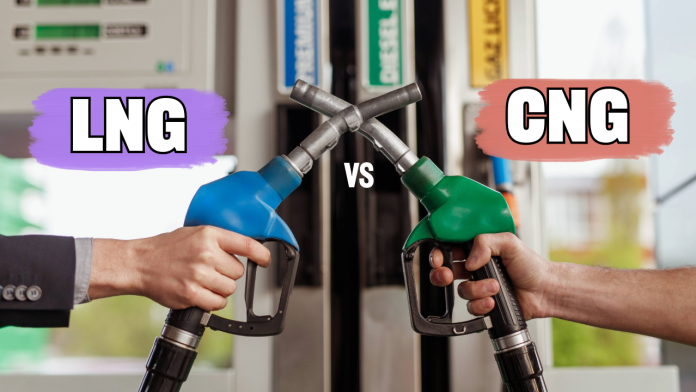Natural gas has become a key resource in the global energy landscape due to its relatively low emissions compared to coal and oil. Two primary forms of natural gas, Liquefied Natural Gas (LNG) and Compressed Natural Gas (CNG), are widely discussed and utilized. Each has unique characteristics, advantages, and challenges. This article provides a comparative analysis of LNG and CNG, exploring their production processes, storage, transportation, applications, and overall impact on the energy sector.
Production and Processing:
LNG (Liquefied Natural Gas):
LNG is natural gas cooled to a liquid state at approximately -162°C (-260°F) through a process called liquefaction. This reduces the gas’s volume by about 600 times, making it easier and more economical to transport over long distances, especially where pipelines are not feasible. The production of LNG involves several steps:
- Purification: Removal of impurities such as water, CO2, H2S, and other contaminants.
- Liquefaction: Cooling the purified natural gas to cryogenic temperatures.
- Storage: LNG is stored in double-walled, insulated tanks designed to keep it cold.
CNG (Compressed Natural Gas):
CNG is natural gas compressed to a high pressure, typically around 200-250 bar (2900-3600 psi). The compression process reduces the volume of natural gas to less than 1% of its original volume at standard atmospheric pressure. The production of CNG involves:
- Purification: Similar to LNG, natural gas is purified to remove impurities.
- Compression: The purified gas is then compressed to high pressures.
- Storage: CNG is stored in high-pressure containers or cylinders.
Storage and Transportation:
LNG:
LNG is primarily transported via specialized cryogenic tankers equipped with insulated containers to maintain the low temperatures required to keep the gas in a liquid state. It can also be stored in large-scale facilities near consumption points, such as import terminals and regasification plants, where it is converted back to its gaseous state for distribution through pipelines.
CNG:
CNG is transported in high-pressure containers, typically via trucks or pipelines. Its transportation over long distances is less economical compared to LNG due to its lower energy density. CNG is more suited for short-distance transportation and local distribution networks.
Applications:
LNG:
- Power Generation: LNG is widely used in power plants due to its efficiency and lower emissions.
- Industrial Use: It serves as a feedstock for various industrial processes.
- Transportation: LNG is used as a fuel for heavy-duty vehicles, ships, and even trains, offering a cleaner alternative to diesel and heavy fuel oils.
CNG:
- Transportation: CNG is commonly used as a fuel for buses, taxis, and light-duty vehicles. Its use in the transportation sector is driven by lower emissions and cost-effectiveness compared to gasoline and diesel.
- Residential and Commercial Use: CNG is used in residential and commercial sectors for heating, cooking, and fueling small-scale power generators.
- Industrial Use: It is used in various industrial applications, though its use is more limited compared to LNG.

Economic and Environmental Impact:
Economic Considerations:
- LNG – The infrastructure required for LNG production, transportation, and storage is capital-intensive. However, its ability to be transported over long distances and stored in large quantities makes it a viable option for regions lacking pipeline infrastructure.
- CNG – The initial investment for CNG infrastructure is lower than that for LNG. However, the cost of transporting CNG over long distances can be higher due to its lower energy density and the need for high-pressure containers.
Environmental Impact:
- LNG – LNG produces fewer emissions compared to coal and oil, making it a cleaner energy source. However, the liquefaction process is energy-intensive and can result in methane emissions if not managed properly.
- CNG – CNG is also a cleaner alternative to conventional fuels, with lower emissions of CO2, NOx, and particulate matter. The compression process is less energy-intensive compared to liquefaction, but methane leakage during compression and storage remains a concern.
Conclusion:
Both LNG and CNG play crucial roles in the transition towards cleaner energy sources. LNG’s suitability for long-distance transportation and large-scale storage makes it ideal for international trade and power generation. In contrast, CNG’s ease of use in the transportation sector and local distribution networks highlights its potential for urban and regional applications. The choice between LNG and CNG depends on various factors, including infrastructure availability, transportation distance, and specific energy needs. As technology advances and environmental regulations become stricter, both forms of natural gas will continue to evolve, contributing to a more sustainable energy future.



